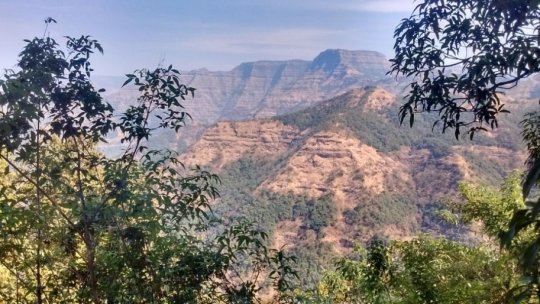Feb 22 2019
New Info on The Cause of the Dinosaur Extinction
 There is little doubt that an asteroid impact, the one that formed the Chicxulub crater in the Caribbean Sea, was the primary cause of the K-Pg extinction event, the one that saw the end of non-avian dinosaurs. But there is continued debate about the role of massive volcanic eruptions at about the same time in the Deccan Traps, in what is modern day India (on the almost exact opposite side of the planet).
There is little doubt that an asteroid impact, the one that formed the Chicxulub crater in the Caribbean Sea, was the primary cause of the K-Pg extinction event, the one that saw the end of non-avian dinosaurs. But there is continued debate about the role of massive volcanic eruptions at about the same time in the Deccan Traps, in what is modern day India (on the almost exact opposite side of the planet).
Some of this debate can be settled by more precise dating of the three relevant events (mass extinction, asteroid impact, Deccan Traps). A new study adds more precise dating of the volcanic eruptions, shedding some light on the whole question.
The varying hypotheses about how these two events relate to the mass extinction include the notion that the asteroid impact was the main event, and the volcanic eruptions a minor player. In this view the asteroid impact caused the mass extinction, and there would have been no mass extinction without it. At the other end of the spectrum is the belief that gases released from the volcanoes at the Deccan Traps caused global climate change, poisoned the atmosphere, and was the primary driver of the mass extinction. By the time the asteroid hit the show was over, or at most the impact served as a coup de grace for an extinction even already well underway.
The reality likely falls somewhere between these two extremes. One idea is that the impact and the eruptions were a one-two punch for life on Earth. The gases caused global warming, causing species to adapt to a warmer climate and also causing significant stress, getting the mass extinction under way. But then the asteroid hit, causing global cooling. The warm-adapted animals could not rapidly adapt to the cold, and the minor extinction event became a mass extinction.
The new study calls the one-two punch hypothesis into question (although does not rule it out). The most precise dating of the Chicxulub impact puts it at 66,052,000 years ago, give or take 8,000 years. The fossil evidence supports the conclusion that the mass extinction occurred pretty much right at that moment (geologically speaking). The question is – how much of the Deccan Traps eruptions had already occurred by that time? Enough to cause global warming? Here’s the new data:
Sprain et al. used argon-argon dating of the volcanic ash from the Deccan Traps to argue that a steady eruption of the flood basalts mostly occurred after the Chicxulub impact. Schoene et al. used uranium-lead dating of zircons from ash beds and concluded that four large magmatic pulses occurred during the flood basalt eruption, the first of which preceded the Chicxulub impact.
So by both analyses most of the lava flows happened after the impact. This supports the idea that the impact itself kicked the eruptions into high gear, likely by causing earthquakes. But – this is not consistent with the global warming followed by cooling hypothesis.
Unless – the volcanoes at the Deccan Traps released a lot of gas prior to the major lava flows. These were not ordinary volcanic eruptions, but “supervolcano” flood basalt eruptions. This caused lava flows 2 km high. The lava flows would have been a major problem for life regionally, but not globally. The release of gases would have caused problems globally.
Unfortunately, we don’t know a lot about flood basalt eruptions. The last one was 15 million years ago. We have never witnessed one in real time (and let’s hope we don’t anytime soon). The geological evidence is not precise enough to figure out, so far, the exact ordering of events. The asteroid impact and the Deccan Traps were essentially simultaneous, geologically speaking. Now we can say that most of the lava flows probably happened after the impact, but we really have no idea about the timing of most of the gas release.
This can make a big difference. A few hundred thousand years of significant gas release could have caused global warming, forcing adaptation. If most of the gassing happened after the impact, however, then it could not have contributed much to the mass extinction, and we are back to the primary asteroid hypothesis. In this scenario the Deccan Traps are an interesting geological side show, but not a player in the extinction itself.
It always seemed to me (as an interested amateur) that the asteroid impact was the main event, based largely on the fossil evidence – dinosaur fossils before the K-Pg, no dinosaur fossils after the K-pg. Evidence that the Deccan Traps also played a significant role has been compelling, however. This new study knocks that evidence down a peg, but it still seems likely that those massive eruptions at least increased the magnitude of the mass extinction.
Now we have to wait for better evidence on the timing of the gas release from the Deccan Traps relative to the lava flows. As always – evidence has the final word.






